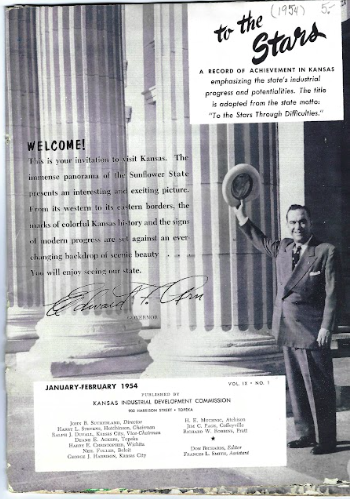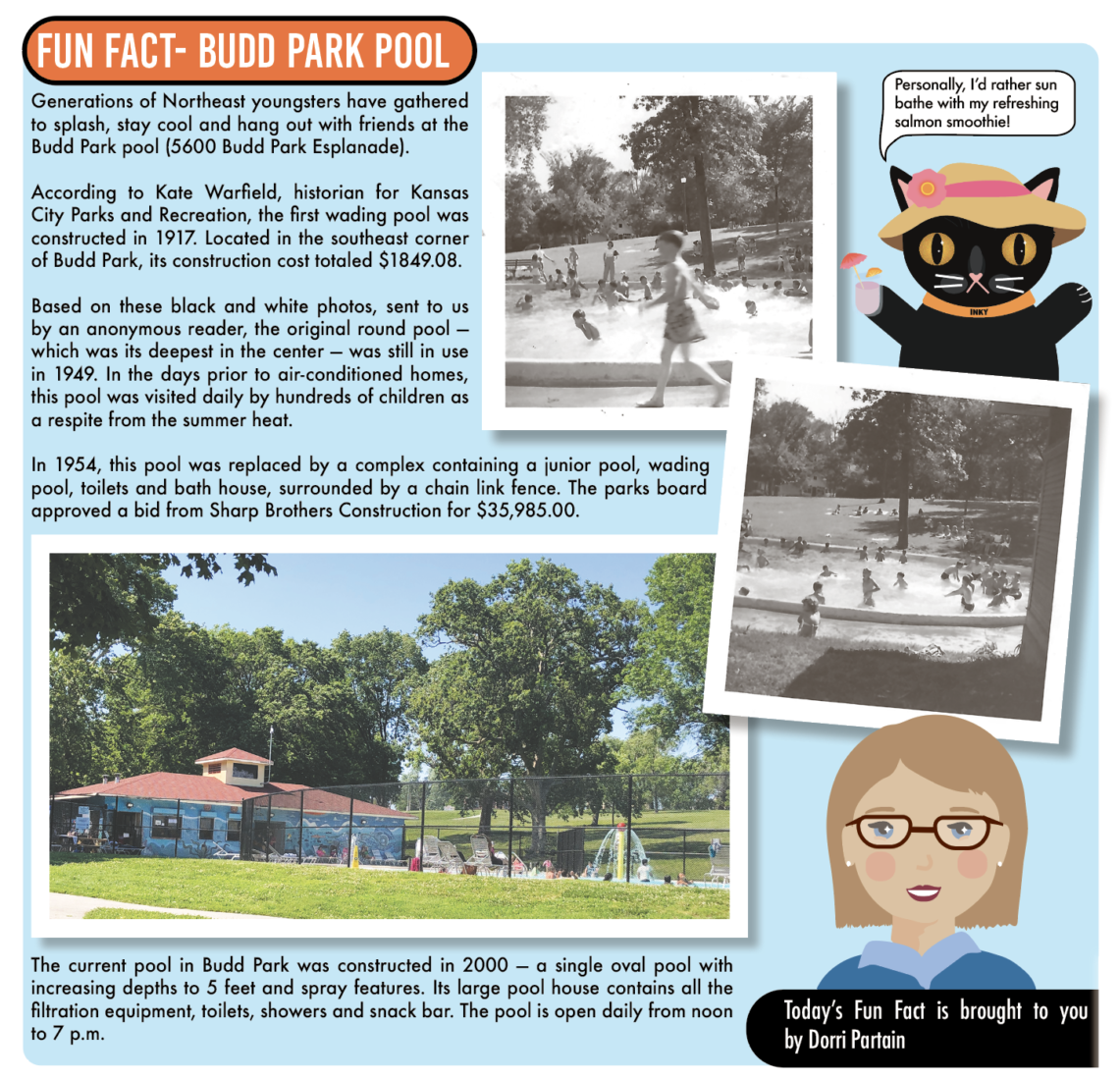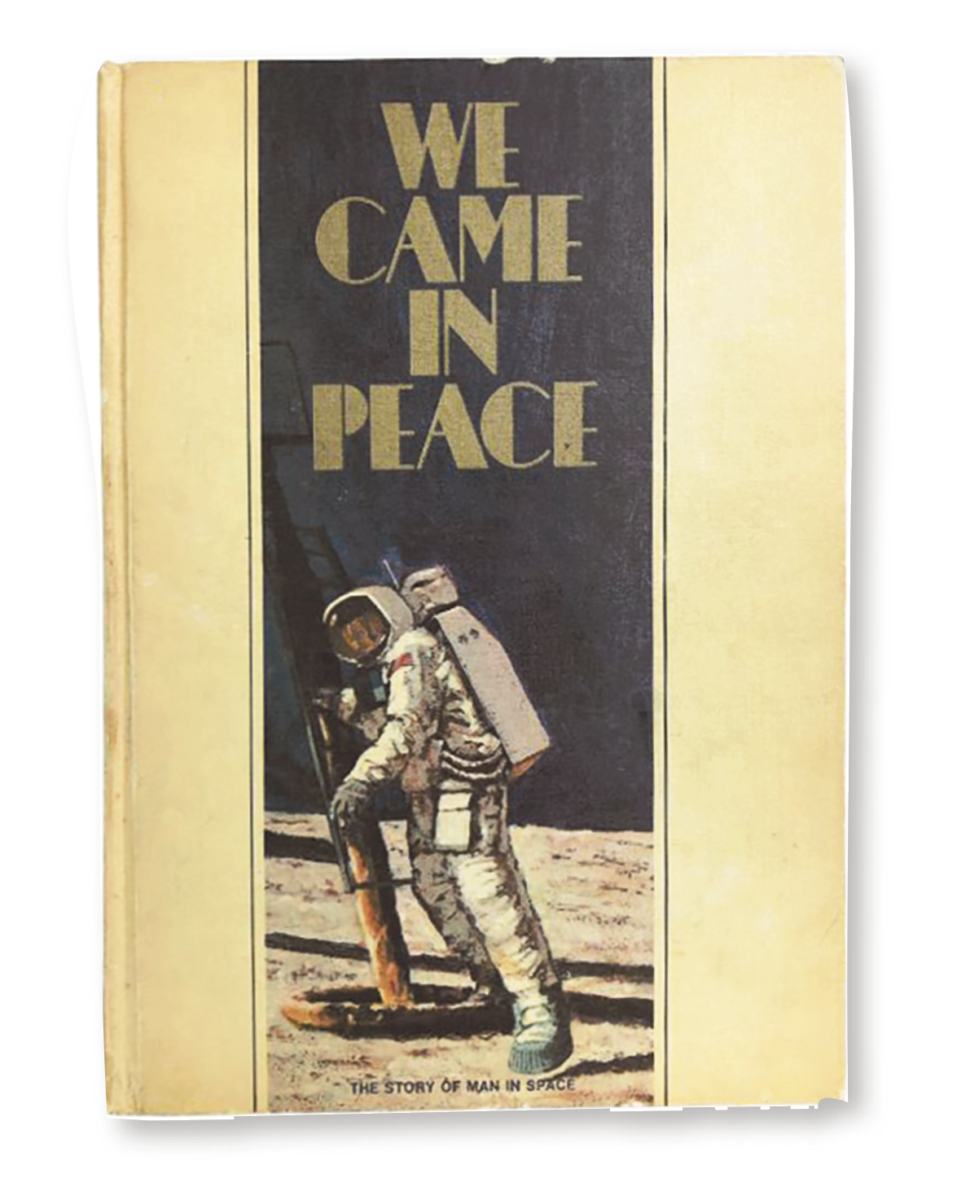
Michael Bushnell
Publisher
This chrome-style postcard showcases one of the many service areas along the newly completed Kansas Turnpike.
The Kansas Turnpike was the brainchild of two influential Kansans, who had dreams of connecting three of the states’ major cities to spur economic development.
Then-Govenor Ed Arn met with state highway director Gary Moss, an El Dorado area attorney, about the possibility of building a safer roadway between Kansas City, Topeka, and Wichita.
The interstate highway system was not yet in existence, but toll roads were gaining favor due to the growing popularity of the automobile.
Until the development of the turnpike, motorists were forced to use narrow, two-lane roadways, often shared with farm machinery and livestock in the more rural areas of the state.

Groundbreaking for the turnpike took place on Dec. 2, 1954, at the Kansas River Bridge in Lawrence. For the next 22 months, construction ensued on the road-bed that ran between the western edges of Kansas City, Kan., and the Oklahoma-Kansas state line.
On Oct. 20, 1956, the road was opened for a day of free travel. More than 12,000 vehicles traveled the roadway that day; many were thought to be traveling for the KU-OU football game played in Memorial Stadium in Lawrence that same day.
Five days later on Oct. 25, the turnpike officially opened with 14 interchanges spread between the Oklahoma state line and the 18th Street Expressway in Kansas City, Kan. Upon its opening, there was no speed limit posted, but merely a speed to be observed by motorists that was “reasonable and proper.”
Soon after, however, speed limits of 80 miles per hour were posted in more rural areas of the turnpike. Today, the roadway is used by more than 120,000 motorists daily. It is completely self-sufficient, supported solely by tolls paid by people who use the road.
The trip between Kansas City and Topeka today will set you back $2.75. If you have a Turnpike K-Tag pass that rate drops to $1.95 for a family sedan.
The description on the back of the card reads: “Interior view of one of the six beautiful restaurants on the new Kansas Turnpike. These restaurants offer the finest in dining and have attractive gift shops with a wide variety of gifts and souvenirs for every occasion.”
These days, the fine dining experience shown on this postcard has been replaced by fast food franchises and full line truck stop services at the six service areas along the turnpike’s 236 mile length.



















